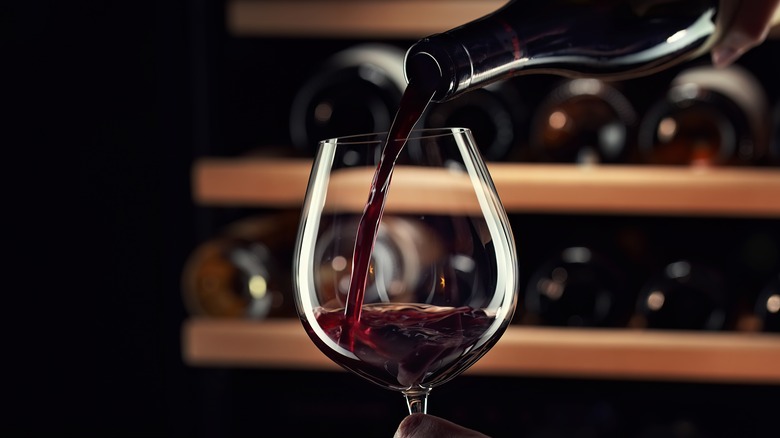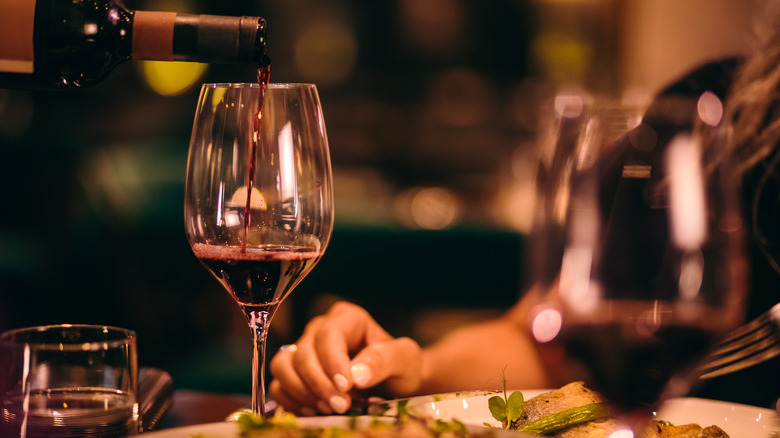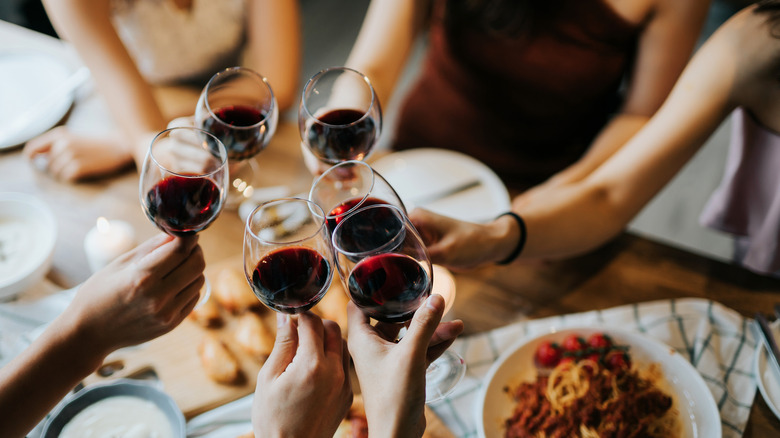How Much You're Overpaying For Restaurant Wine, According To Chefs
There are many myths you should stop believing about wine — such as, older wine always tastes better and expensive varietals are always of higher quality. But, when it comes to the myth that wine is more expensive at restaurants, well, unfortunately that is actually true. As it turns out, ordering a bottle of your favorite red or white when eating out could cost you 2.5 times more than what you'd pay at a retailer, according to some chefs.
Of course, surges in wine prices will vary from one restaurant to the next. For example, an upscale eatery that has sommeliers on staff may charge $80 for a bottle of wine that would otherwise retail for $20, whereas a casual restaurant may only charge $50. Some industry professionals even recommend pricing wine three to four times higher at restaurants than the retail sales price, especially for rare or specialty bottles.
Similar to food cost markups, the increase in wine prices when dining out is often attributed to operating costs, such as wages for employees and the rental fee for the restaurant space. And, since most establishments make more of their profits on alcoholic beverages than food, higher price points only make for higher profit margins — at least for the restaurant.
Glasses of wine can be even pricier than bottles
While you might want to splurge and order one glass of that $100 bottle of vino to go along with your dinner, some chefs advise that you may want to go all out for the bottle itself. That's because wine by the glass is often much pricier when dining out. On average, a single pour costs about 85-100% of the entire bottle's wholesale cost. Meaning, that if a restaurant purchases a bottle of wine for $10, they may charge anywhere between $8.50 and $10 per glass.
And say, for example, the restaurant was to markup that bottle by 2.5 times its retail price to $25. In this case, you may be better off just buying the entire bottle, especially if you or your guests plan on having more than two glasses.
Wine sold by the glass is often even more expensive because of the potential for waste — and thus, loss of profits. An opened bottle starts to deteriorate after 24 hours, so restaurants have a narrow time frame to sell the rest after a single pour.
Saving money on wine when dining out is possible
Enjoying wine while out to dinner doesn't have to be expensive. In order to ensure your dollars really go the distance, do your research ahead of time. Before making a reservation, check out a restaurant's wine list to see if they're reasonably priced or if the restaurant offers any specials. Many establishments will promote half-priced glasses of wine or even bottles during happy hour or certain nights of the week, so don't be afraid to call and ask if the menu doesn't make mention of any discounts on first glance.
If a restaurant doesn't offer any specials or has exorbitant wine fees, you can also just bring your own bottle for BYOB spots. Just keep in mind that many restaurants charge a corkage fee to cover the cost of waiters having to serve wine brought in from an outside source. So, be sure to opt for eateries that have a low or no corkage fee for an inexpensive wine that you'll actually want to toast to.



